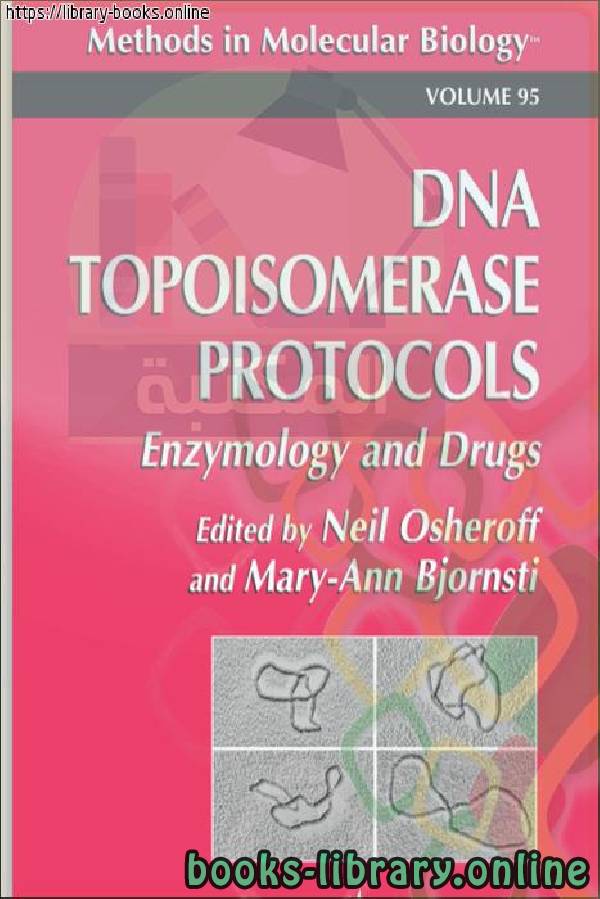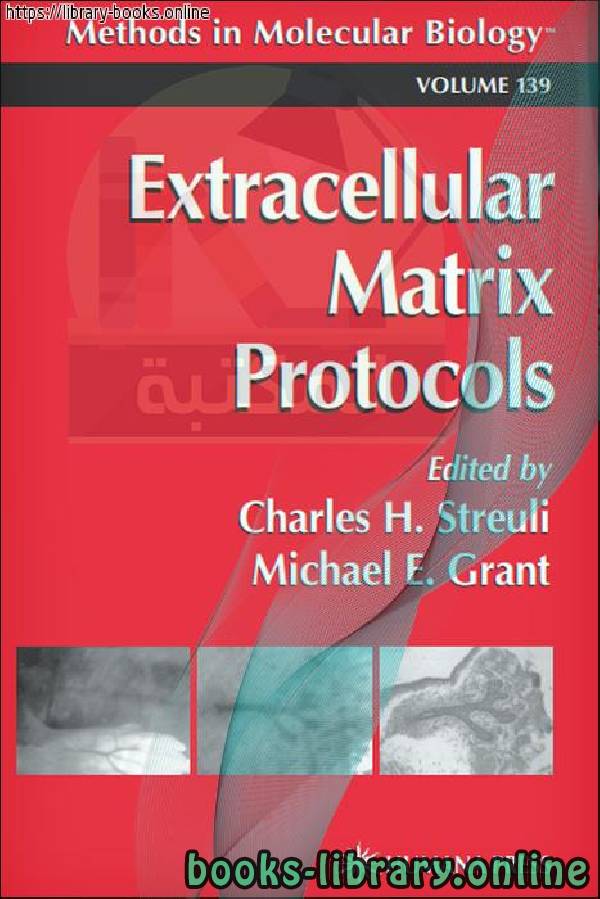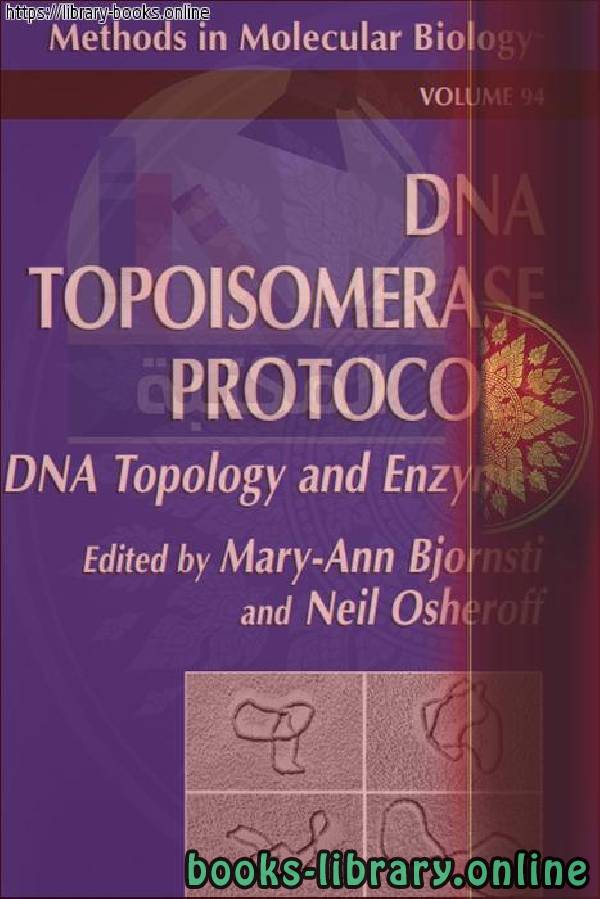كتاب DNA Topoisomerase Protocols 2
نبذه عن الكتاب: Lance Stewart and James J. Champoux 1. Introduction Type I topoisomerases catalyze topological changes in duplex DNA by reversibly nicking one strand, whereas type II enzymes catalyze the transient breakage of both strands simultaneously. The type I enzymes alter the linking number of covalently closed circular DNA in steps of one, presumably by allowing an unbroken segment of one strand of the DNA to move through the transient single-strand break in the other strand. The type II enzymes alter the linking number in steps of two by allowing an unbroken segment of duplex DNA to pass through the transient double-strand break. All topoisomerases conserve phosphodiester bond energy during catalysis by transiently forming a phosphotyrosine bond between the active-site tyrosine residue and the phosphate at one end of the broken strand(s) (1). The type I topoisomerases fall into two categories depending on the polarity of their covalent attachment. The cellular and viral eukaryotic topoisomerase I enzymes (2) and the archebacterial topoisomerase V (3) are classified as type I-3', since they become linked to the 3'-end of the broken strand (1). These enzymes also have the distinctive characteristic that they can relax both positively and negatively supercoiled DNA in the absence of an energy cofactor or divalent metal cation (2). The other type I enzymes—topoisomerases I and III of prokaryotes (1,4,5), reverse gyrase and topoisomerase III of archebacteria (6–9), and eukaryotic topoisomerase III (10)—become linked to the 5'-end of the broken strand and are classified as type I-5'. These enzymes require Mg2+ for activity and can only relax negatively supercoiled DNA. The type II topoisomerases (see Chapters 2 and 3)—whether virally encoded or isolated from archebacteria, eubacteria, or eukaryotes—invariably require both ATP and Mg2+ for activity and become linked to the 5'-end of the broken strandsNeil Osheroff and Mary-Ann Bjornsti - ❰ له مجموعة من الإنجازات والمؤلفات أبرزها ❞ DNA Topoisomerase Protocols 2 ❝ ❱
من Biology Books علم الأحياء - مكتبة الكتب العلمية.

قراءة كتاب DNA Topoisomerase Protocols 2 أونلاين
معلومات عن كتاب DNA Topoisomerase Protocols 2:
Lance Stewart and James J. Champoux
1. Introduction
Type I topoisomerases catalyze topological changes in duplex DNA by
reversibly nicking one strand, whereas type II enzymes catalyze the transient
breakage of both strands simultaneously. The type I enzymes alter the linking
number of covalently closed circular DNA in steps of one, presumably by
allowing an unbroken segment of one strand of the DNA to move through the
transient single-strand break in the other strand. The type II enzymes alter the
linking number in steps of two by allowing an unbroken segment of duplex
DNA to pass through the transient double-strand break.
All topoisomerases conserve phosphodiester bond energy during catalysis
by transiently forming a phosphotyrosine bond between the active-site tyrosine
residue and the phosphate at one end of the broken strand(s) (1). The type I
topoisomerases fall into two categories depending on the polarity of their
covalent attachment. The cellular and viral eukaryotic topoisomerase I enzymes
(2) and the archebacterial topoisomerase V (3) are classified as type I-3', since
they become linked to the 3'-end of the broken strand (1). These enzymes also
have the distinctive characteristic that they can relax both positively and negatively supercoiled DNA in the absence of an energy cofactor or divalent metal
cation (2). The other type I enzymes—topoisomerases I and III of prokaryotes
(1,4,5), reverse gyrase and topoisomerase III of archebacteria (6–9), and
eukaryotic topoisomerase III (10)—become linked to the 5'-end of the broken
strand and are classified as type I-5'. These enzymes require Mg2+ for activity
and can only relax negatively supercoiled DNA. The type II topoisomerases (see
Chapters 2 and 3)—whether virally encoded or isolated from archebacteria,
eubacteria, or eukaryotes—invariably require both ATP and Mg2+ for activity
and become linked to the 5'-end of the broken strands
سنة النشر : 2005م / 1426هـ .
عدد مرات التحميل : 3830 مرّة / مرات.
تم اضافته في : الأحد , 2 فبراير 2020م.
حجم الكتاب عند التحميل : 4.099 .
تعليقات ومناقشات حول الكتاب:
Biologically
Biology is a natural science that is concerned with the study of life, its various forms and its function, how these organisms interact with each other and with the surrounding environment. The word biology in Greek is made up of two words: bio (βίος) meaning life. And loggia (-λογία) means science or study. Biology: the similarity of vegetation and animal cover on the edges of the African and American states, and the existence of the same fossil.
Branches of biology
Biology is an ancient science thousands of years old and modern biology began in the nineteenth century. This science has multiple branches. Among them are:
Anatomy
Botany
Biochemia
Biogeography
Biofisia
Cytology or cell science
Ecology or environmental science
نبذه عن الكتاب:
Lance Stewart and James J. Champoux
1. Introduction
Type I topoisomerases catalyze topological changes in duplex DNA by
reversibly nicking one strand, whereas type II enzymes catalyze the transient
breakage of both strands simultaneously. The type I enzymes alter the linking
number of covalently closed circular DNA in steps of one, presumably by
allowing an unbroken segment of one strand of the DNA to move through the
transient single-strand break in the other strand. The type II enzymes alter the
linking number in steps of two by allowing an unbroken segment of duplex
DNA to pass through the transient double-strand break.
All topoisomerases conserve phosphodiester bond energy during catalysis
by transiently forming a phosphotyrosine bond between the active-site tyrosine
residue and the phosphate at one end of the broken strand(s) (1). The type I
topoisomerases fall into two categories depending on the polarity of their
covalent attachment. The cellular and viral eukaryotic topoisomerase I enzymes
(2) and the archebacterial topoisomerase V (3) are classified as type I-3', since
they become linked to the 3'-end of the broken strand (1). These enzymes also
have the distinctive characteristic that they can relax both positively and negatively supercoiled DNA in the absence of an energy cofactor or divalent metal
cation (2). The other type I enzymes—topoisomerases I and III of prokaryotes
(1,4,5), reverse gyrase and topoisomerase III of archebacteria (6–9), and
eukaryotic topoisomerase III (10)—become linked to the 5'-end of the broken
strand and are classified as type I-5'. These enzymes require Mg2+ for activity
and can only relax negatively supercoiled DNA. The type II topoisomerases (see
Chapters 2 and 3)—whether virally encoded or isolated from archebacteria,
eubacteria, or eukaryotes—invariably require both ATP and Mg2+ for activity
and become linked to the 5'-end of the broken strands
Biology
Human biology
Who is the founder of biology?
The importance of biology
Areas of work in the field of biology
Theories of biology
Research on biology for the first grade of secondary school
Human biology
 مهلاً !
مهلاً !قبل تحميل الكتاب .. يجب ان يتوفر لديكم برنامج تشغيل وقراءة ملفات pdf
يمكن تحميلة من هنا 'تحميل البرنامج'

نوع الكتاب : pdf.
اذا اعجبك الكتاب فضلاً اضغط على أعجبني و يمكنك تحميله من هنا:


كتب اخرى في Biology Books
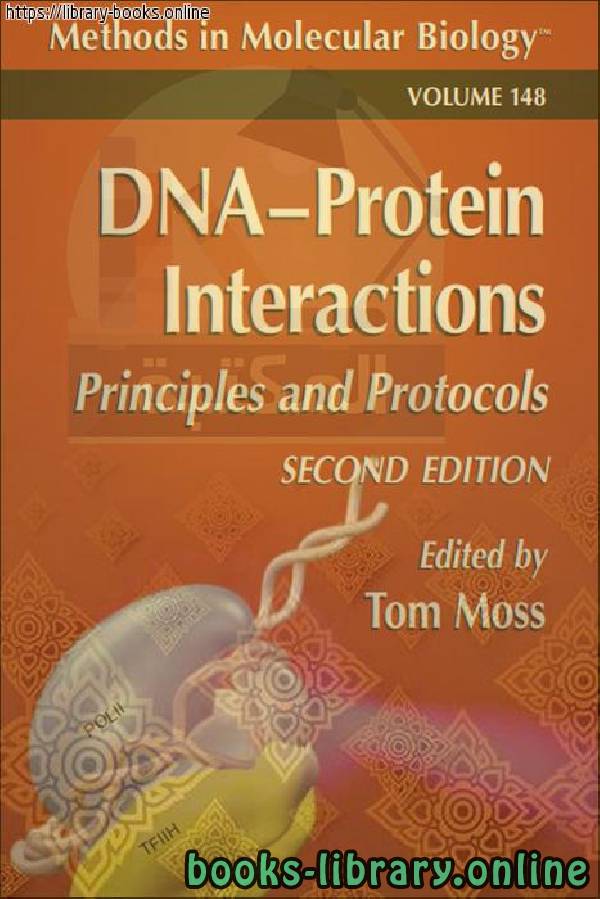
DNA Protein Interactions Principles and Protocols PDF
قراءة و تحميل كتاب DNA Protein Interactions Principles and Protocols PDF مجانا
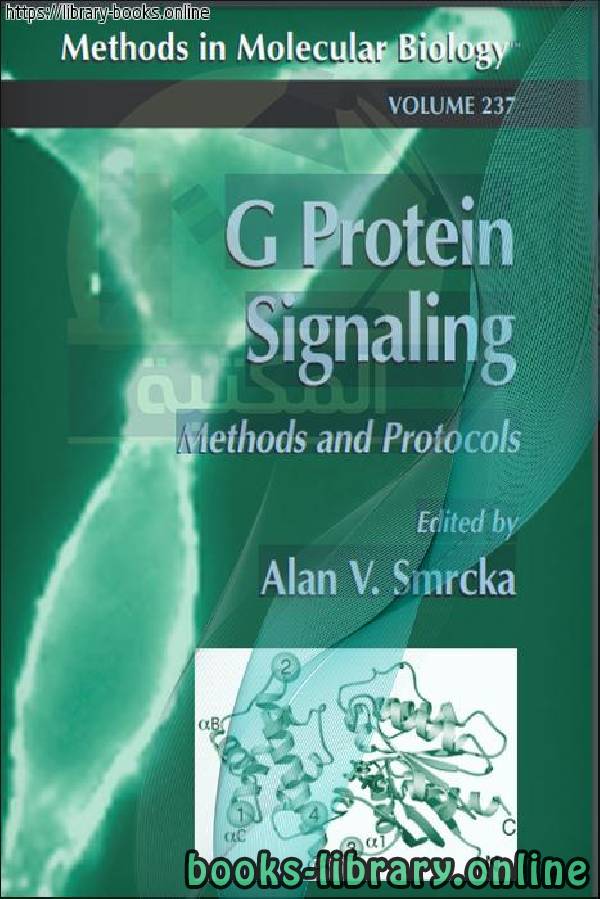
Protein Signaling_ Methods and Protocols PDF
قراءة و تحميل كتاب Protein Signaling_ Methods and Protocols PDF مجانا

(Gene Expression Profiling_ Methods and PDF
قراءة و تحميل كتاب (Gene Expression Profiling_ Methods and PDF مجانا
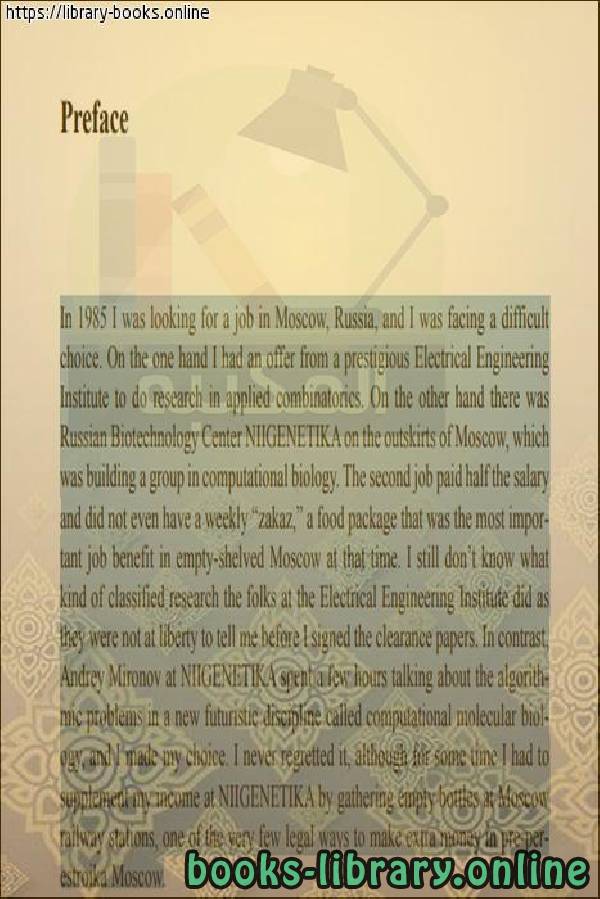
Computational Molecular Biology Algorithmic PDF
قراءة و تحميل كتاب Computational Molecular Biology Algorithmic PDF مجانا

Clinical Applications of Capillary Electrophoresis PDF
قراءة و تحميل كتاب Clinical Applications of Capillary Electrophoresis PDF مجانا
